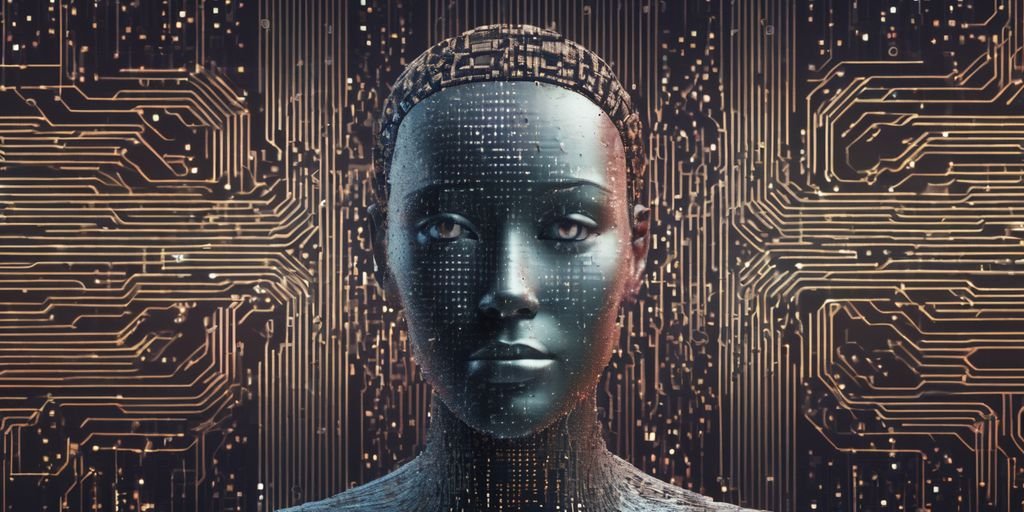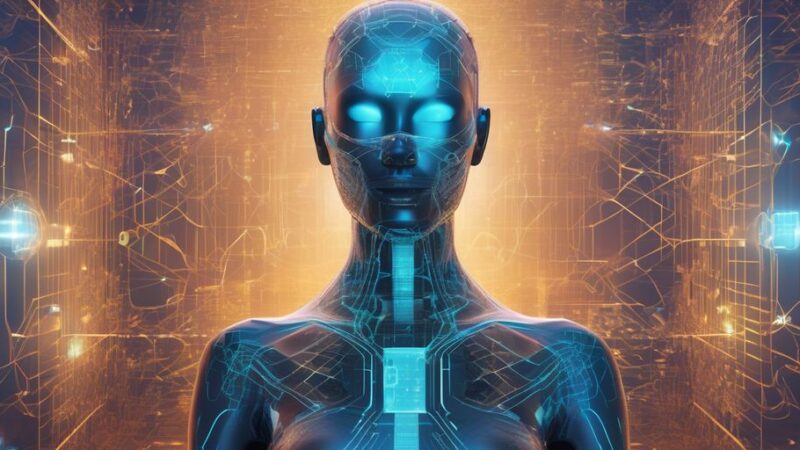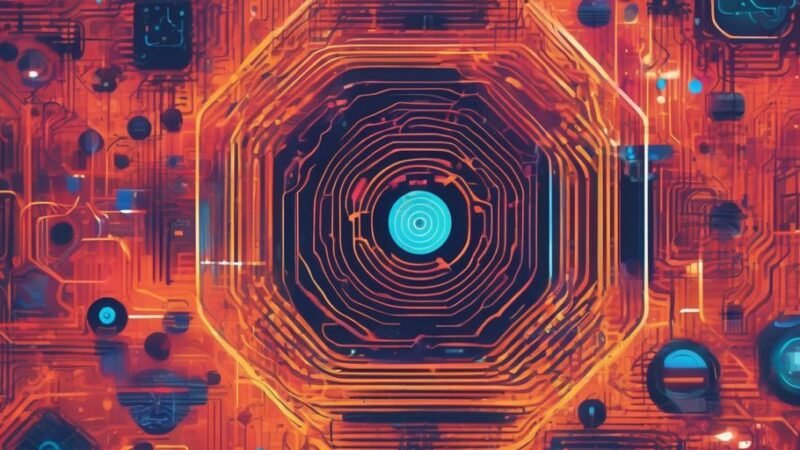The Rise of Fake Nudes AI: Ethical Implications and Solutions

Unveiling the harsh realities of AI-generated fake nudes, this article explores the profound impacts on privacy, mental health, and societal norms. Highlighting incidents like the Westfield High School case, it delves into the digital dangers facing today’s youth and the urgent need for robust legal frameworks and technological defenses.
Key Takeaways
- AI-generated fake nudes are a growing and disturbing issue, particularly impacting teenage girls and their sense of safety and privacy.
- Technological advancements in AI, like GANs, are making these fake images more realistic and harder to detect.
- There is a significant need for enhanced digital literacy to help individuals recognize and understand the implications of fake nudes.
- Legal protections are currently insufficient, necessitating the development of new legislation tailored to address the nuances of AI-generated content.
- Community and policy actions, alongside educational initiatives, are crucial in combating the spread and impact of AI fake nudes.
Understanding the Technology Behind Fake Nudes AI
Deep Learning and GANs
AI fake nudes are primarily created using advanced deep learning techniques, particularly Generative Adversarial Networks (GANs). These networks involve two models: one that generates images and another that evaluates them. Over time, the generator improves, producing highly realistic images. This technology’s sophistication is rapidly advancing, making the fake images increasingly difficult to distinguish from real ones.
Advancements in Detection Tools
As the technology for creating fake nudes evolves, so too does the technology for detecting them. Numerous organizations and companies have developed algorithms that can identify these deepfakes. These tools analyze the images for inconsistencies typically unseen by the human eye, such as irregular blinking or unnatural skin textures.
Future Technological Predictions
The trajectory of AI in the creation of fake nudes suggests a future where these technologies become more accessible and potent. Predictions indicate that both the creation and detection technologies will continue to evolve, with potential for both positive uses and abuses. The dual development of creation and detection tools will likely shape the digital landscape significantly.
The Societal Impact of AI-Generated Fake Nudes
Impact on Teenage Girls
AI-generated fake nudes have a particularly disturbing impact on teenage girls, undermining their sense of security and privacy. This demographic is often targeted, leading to emotional and psychological distress.
Disruption of Privacy and Safety
The creation and distribution of AI-generated nudes disrupt privacy and safety on a broad scale. Individuals find their images used without consent, leading to a significant erosion of personal boundaries and trust in digital spaces.
Societal Shifts and Digital Literacy
The prevalence of AI-generated fake nudes necessitates a shift towards enhanced digital literacy. Education on identifying such content and understanding its implications is crucial. This shift is essential for fostering a society that can critically assess and respond to digital threats.
AI-generated nudes raise ethical and legal concerns, highlighting the need for updated legislation and education on digital consent and privacy in the evolving AI landscape.
Legal Challenges and Solutions for AI Fake Nudes
Current Legal Protections
Current legal protections against AI-generated fake nudes are sparse and vary significantly by region. This lack of uniformity can lead to confusion and inadequate recourse for victims. For instance, some jurisdictions might treat fake nudes as a form of harassment or defamation, while others may not have specific laws addressing the issue at all.
Need for New Legislation
The rapid advancement of technologies like Makenude AI necessitates the creation of new legislation. Lawmakers must understand the technology’s capabilities and its potential misuse to draft effective laws. Steps could include defining digital consent and establishing clear penalties for violations.
Variation in Laws by Region
Laws concerning AI fake nudes differ greatly across countries and even within states in the same country. Here’s a brief overview of how some regions are handling the issue:
- United States: Some states have laws against digital impersonation but lack specific regulations for deepfakes.
- European Union: GDPR provides some protections against misuse of personal data, which could include fake nudes.
- Asia: Varies widely, with some countries having strict internet content laws and others having almost no regulations concerning digital content.
It is crucial for international cooperation and standardization of laws to effectively combat the proliferation of AI-generated fake nudes.
Notable Incidents of AI Fake Nudes Misuse
Westfield High School Incident
The Westfield High School incident starkly illustrates the personal devastation that can result from the misuse of AI-generated fake nudes. Students were targeted, leading to severe emotional and psychological distress. This case underscores the urgent need for robust digital safety education and stricter legal frameworks to combat such abuses.
The Sensity Report Incident
In a revealing study, Sensity, an online security firm, discovered a bot on Telegram that enabled users to create deepfake nudes without consent. This incident highlights the ease of access to tools that can infringe on personal privacy and the necessity for continuous advancements in detection technologies to curb these violations.
Other Global Examples
AI fake nudes are a global issue, affecting individuals beyond educational institutions. Various incidents around the world have shown the widespread misuse of this technology, emphasizing the need for international cooperation and comprehensive legal measures to protect individuals from non-consensual digital exploitation.
Mitigation Strategies Against AI Fake Nudes
Technological Solutions
Several companies and organizations have taken significant steps in developing algorithms and technologies to detect deepfakes. These AI tools are breakthroughs in identifying and eliminating these malicious fake pornographic images from the web prior to them inflicting harm. Here are a few examples:
- Development of advanced machine learning models
- Implementation of real-time detection systems
- Collaboration with social media platforms to block uploads
Educational Initiatives
To combat the spread of AI-generated fake nudes, educational initiatives play a crucial role. By raising awareness about the dangers and ethical implications of this technology, we can foster a more informed public. Key components include:
- Workshops and seminars on digital literacy
- Online courses detailing the identification of fake content
- Public campaigns to promote responsible AI usage
Community and Policy Actions
Governments and policy makers must take decisive actions to regulate the creation and distribution of AI fake nudes. New legislation is essential to provide clear legal frameworks that protect individuals from non-consensual digital exploitation. Efforts should focus on:
- Establishing strict penalties for creators and distributors
- Creating support systems for victims
- Encouraging international cooperation to tackle this global issue
The Future Implications of AI Fake Nudes
Potential Changes in Digital Landscape
The rise of AI fake nudes could reshape the digital landscape. As technology evolves, the use of deep learning techniques like GANs is expected to become more sophisticated, leading to hyper-realistic deepfakes that are harder to detect. This necessitates a greater need for digital literacy education to help people spot these images and understand their implications on privacy rights and consent.
Predictions for AI and Privacy
Advancements in detection tools and algorithms are combating the issue of AI fake nudes. However, as these methods become more advanced, so too will the techniques used to create fake nudes, creating a continuous cycle of action and reaction in the field of digital privacy and security.
Long-term Societal Effects
A growing awareness about AI fake nudes might cause societal shifts, emphasizing the need for comprehensive digital literacy. This awareness could lead to new legal frameworks designed to protect individuals from the misuse of AI technology, ensuring that future generations are safeguarded against these evolving threats.
Conclusion
AI-generated fake nudes represent a significant ethical and societal challenge that demands immediate and comprehensive action. Throughout this article, we’ve explored the technological underpinnings, societal impacts, and legal landscapes associated with this disturbing trend. The incident at Westfield High School underscores the personal devastation that can result from such technology. It is clear that while some legal protections exist, much more robust legislation, alongside technological solutions and societal education, is urgently needed to combat the misuse of AI in creating fake nudes. As we move forward, it is crucial for all stakeholders, including lawmakers, technologists, and educators, to collaborate in developing and enforcing measures that protect individuals’ privacy and uphold ethical standards in digital media.
Frequently Asked Questions
What are AI fake nudes?
AI fake nudes are digitally created or altered images or videos that depict individuals without their clothing, done without their consent using artificial intelligence technologies, primarily deep learning and GANs (Generative Adversarial Networks).
How do AI fake nudes impact individuals and society?
AI fake nudes can severely impact individuals’ mental health, privacy, and safety, particularly affecting teenage girls. They contribute to a broader societal issue by undermining trust in digital content, promoting misinformation, and necessitating increased digital literacy.
What legal protections exist against AI fake nudes?
The legal landscape around AI fake nudes is still developing. Some regions have laws against creating or distributing digital sexual images without consent, but global standards vary significantly, and many places lack specific regulations addressing AI-generated content.
What can be done to detect and prevent AI fake nudes?
Technological advancements are being made in developing algorithms that can detect deepfakes and AI-generated fake nudes. Educational initiatives are also crucial, teaching individuals how to recognize fake content and understand its implications.
What was the Westfield High School incident?
The Westfield High School incident involved the use of AI technology to create and spread fake nude images of students, highlighting the devastating personal and social consequences of misuse of AI in creating non-consensual explicit content.
How can society adapt to the challenges posed by AI fake nudes?
Society needs to implement robust legal frameworks, technological defenses, and educational programs to combat AI fake nudes. Promoting digital literacy and ethical AI use, alongside developing community and policy actions, are essential steps towards adaptation.






